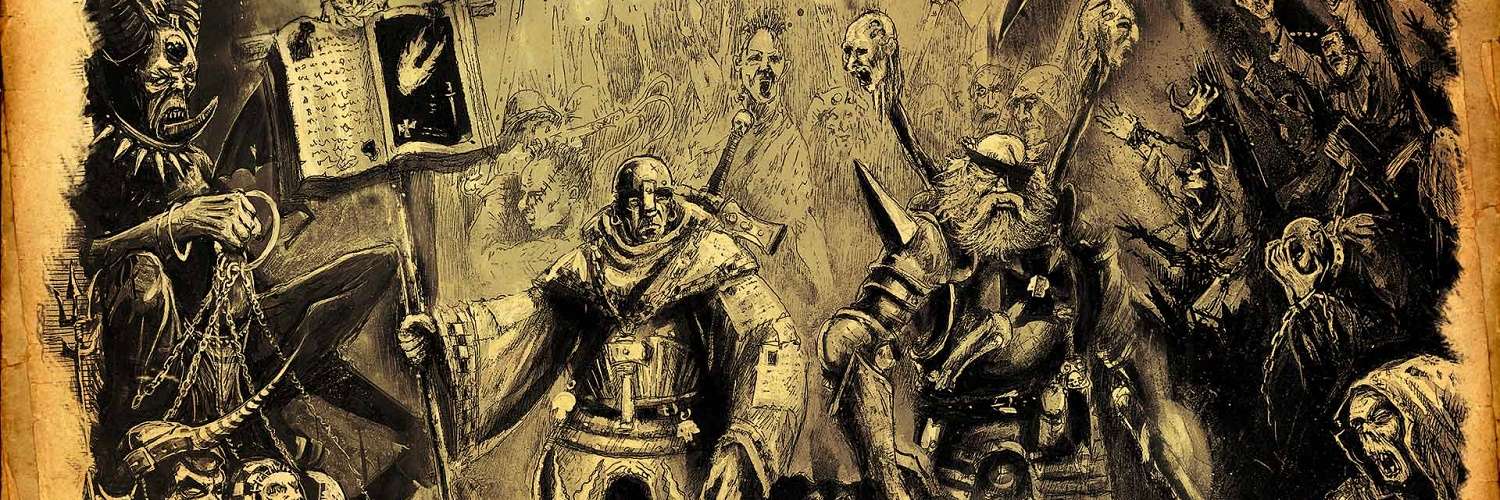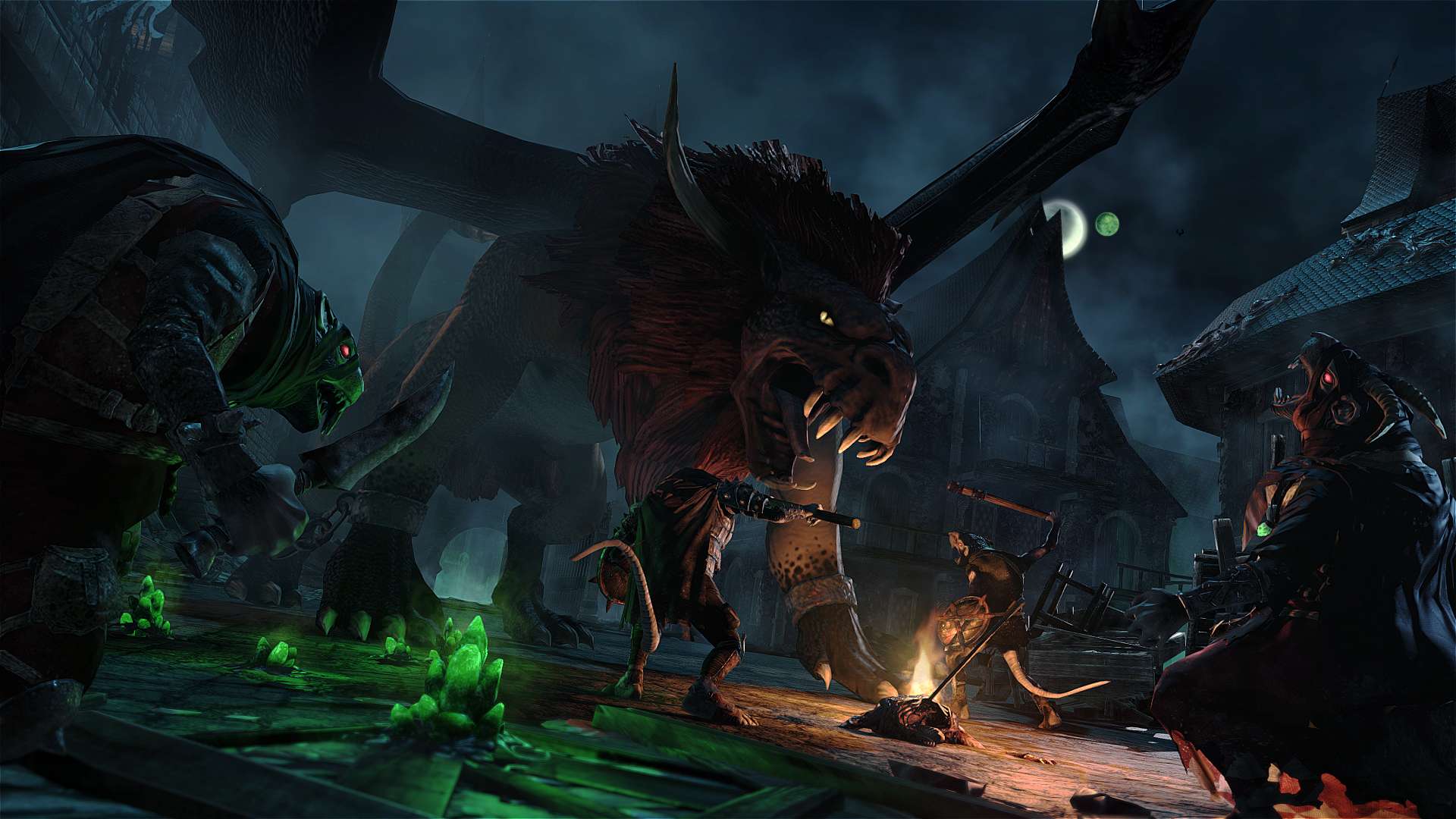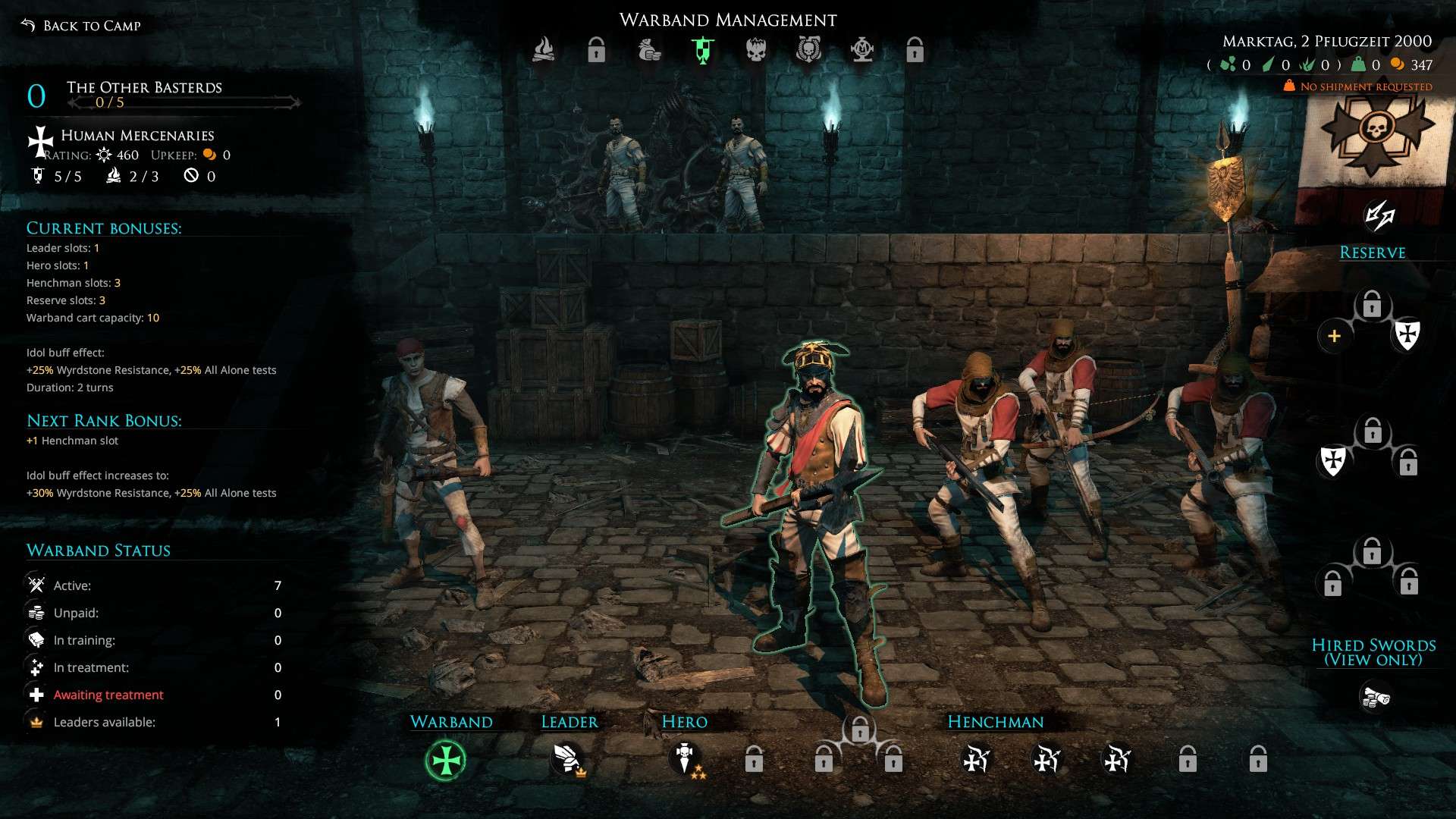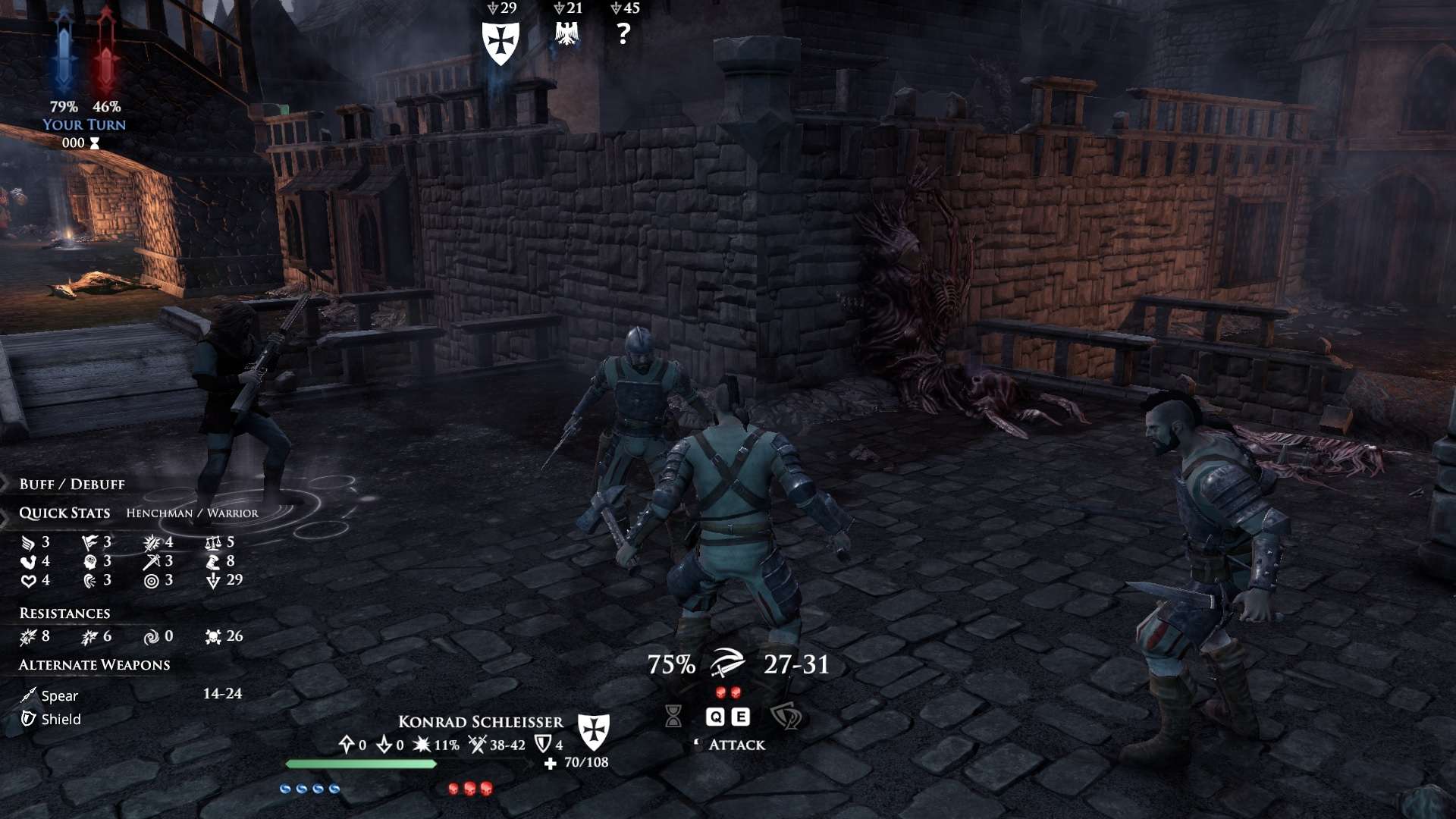
Mordheim: City of the Damned PC Review
It was only a few weeks since I was celebrating the new freedom with the Warhammer license and how it could work with a multitude of genres. Warhammer: End Times – Vermintide is a great first-person cooperative game that used the traditional Warhammer world to bring us giant murderous rats to slaughter. This instance, the licence, more specifically a Games Workshop tabletop game called Mordheim set in the Warhammer universe, has, for the first time, been brought to the world of video games by developers Rogue Factor. Mordheim is a turn-based, strategy RPG that brings stimulating gameplay through its importance on warband members and its permadeath systems to offer up a tense, challenging strategy game that takes time to understand its workings.
Mordheim is the titular city where the action takes place. It once belong to the Empire, but in depressing Warhammer fashion, a disaster occurred when a comet came crashing down into Mordheim, causing chaos and a whole lot of destruction in the once alive city. The aftermath of the hit has revealed leftover magical stones, called Wyrdstones, which hold immense power to fuel magic. This means every faction, be it the rat-race Skaven, The Sisters of Sigmar, the Cult of the Possessed or the human mercenaries, all want a piece of the pie to profit from or gain the upper hand with its power. The appearance of these chaos-infused stones causes war between the various factions, who go savaging for pieces of crystal inside Mordheim, a now dangerous place littered with traps and opposition warbands who have the same idea as yourself – grab the Wyrdstones or die trying.
Before doing anything I recommend jumping into the tutorial section and spending a good hour learning about the game. Mordheim is a complex title that doesn’t hide its learning curve. The game has a page full of tutorials to take part in that are kept away from the campaign- jumping head first into the campaign is sure fire way to get yourself killed. Mordheim’s mechanics are built upon layers of various features, and while the combat itself might seem easy to grasp, it’s the additional rules that hang in the underneath that requires these tutorials, which pack plenty of information to get newcomers started. While everything might not come together instantly, people do begin to pick up the more complicated systems through playing the campaign for a few hours and learning from trial and error, but stick with the game, no matter how nasty the outcome might become, and Mordheim will be a rewarding experience over the many hours it can take to feel completed.
The campaign begins by picking one of the four already mentioned factions, which each have their own traits to built an squad behind. Feeling a little sorry for the Skaven after giving them a beat down in Vermintide, I decided to be the rats for my first adventure into Mordheim – those critters focus on dealing critical damage from stealth-based skills. No matter who you pick, these people are your warband, your own personal troops that you need to look after.
In the beginning, you are given enough money to put a small group together. A warband begins with its leader, the key character that keeps everyone else together. If the leader is disposed of in battle, then the troops morale can drop, which leaves them teetering on the dangerous edge of becoming routed. This is also true for the opposite team, so keeping the leader alive is critical to a successful mission. Another unique unit is the hero class, a special unit that comes with added strengths and abilities that put it above the standard units – the cheaper guys that make up the bulk of your squad. In total, eight standard units can be assigned to the warband to join battle with a hero and a leader. Reserves can also be purchased, but you will not be getting them until a few missions into the game, as initially you are limited to four and begin to unlock the rest as progression is made in the campaign.
Micromanagement is a very important part of Mordheim. As your warband grows, so do their levels, which translates into better abilities, new skills and increased stats – players can focus which area they want to grow a unit by placing unused points into stats. The more missions that are accomplished, the better the warband becomes, and with more cash coming in from winning, better weapons and armour can be purchased to improve their chance of survival. There is a lot to manage in the encampment section, the central hub where everything is done before heading off on a mission, as it’s not just about improving soldiers, but keeping them happy, well or alive, otherwise soldiers will either die, become injured and require time and money to heal them. Soldiers can also get up and leave your warband, probably to go find some other chap who is willing to pay them gold for their services. Warband management brings depth to both units and the overall gameplay, as keeping your warband together as long as possible is one of two key objectives throughout playing the single player content.
Mordheim is a strategy RPG, so all this micromanagement should, in theory, have you ready to head into battle with a team that is at their best. The game builds up a mission structure of random quests and predetermined story missions. Sending out scouts will reveal randomly generated side missions with basic tasks – wipe out an enemy team or at least hurt them enough to rout them, but optional secondary objectives add more bonus rewards for accomplishing them and are frequently more interesting than the main target, as secondary tasks can require looting a specific enemy or gather X amount of Wyrdstones. The main story is where objectives become compelling. One of the earlier fights with the Sisters of Sigmar requires cargo from the warband’s wagon to be delivered to various locations, while making sure the enemies lurking around the city don’t mess you up. Planning before acting is vital, and looking over the map with the aerial view does wonders for precise movement that might just keep a fighter alive until the next round.
Plotting points of interest on the map – these shoot beams of purple light into the sky – are a godsend. Maps are usually bang in the middle of towns, with houses and taverns blocking views, creating a maze from stone buildings that makes it hard know where to go without using the signal beams. In the beginning, Mordheim gave me vibes of Valkyrie Chronicles, as movement is similar to Sega’s brilliant game, using the WASD keys to move around in third person. Each unit has a certain amount of strategy points, but rather focusing on grid-based movement, a blue ring around the character acts as a movement zone. Walking out of the ring will cause cost a strategy point, and this can be done until points are exhaust. Due to the map design, vertical movement plays a big role, and units can spend two strategy points to either climb up or jump down to alter their positioning.
It should be noted that strategy points are also used to activate skills that increase dodge, parry chances and even fleeing from an unfair encounter, so moving until drained is not always the best choice. The land is littered with nasty traps, where the handy perception ability to reveal traps and close-by enemies – line of sight is used to see the placement of units, otherwise they are hidden from view – at the cost of an strategy point is also an option. Collision detection can cause issues with movement, getting stuck on a corner or trapped in a building is a small annoyance, but if you manage to keep within the movement ring, the move is not wasted. Only when large objects interfere is when losing strategy points is a problem.
Actions are performed with action points, and Mordheim offers various ways to use them. A standard attack might cost one or two points depending on the weapon use, but other options are available. Ambush cost two points and puts the unit in a stance, which is like overwatch for melee characters, and if any unlucky fool crosses into the range box of the ambush stance, then the ambush commences. Counter attacks take three action points, handy for returning fire when under assault. One thing to note is that dice rolls play heavy in this game.
While I did say Valkyria Chronicles can be felt in this game, that’s only in its movement mechanics, as Valkyria Chronicles felt as if you was in control of aiming and shooting. In Mordheim, this is clearly not the case, and the game features some of the worst XCOM-Syndrome, where high percentage abilities will fail time and time again, causing frustrating in dire situations. It can also work in your favour, with CPU fighters wasting moves or placing themselves in weird positions that causes them difficulties with attacking, and of course, just the typical randomness of dice rolling messing their attacking/defending. That’s just the effect that comes with using random number generations, and to be honest, this is based off the board game, where dice rolls play a huge part in, but it hurts so much here when it hits you.
The pain is felt due to permadeath, sure, losing a valued member is always a set back after having a strong squad, but members of the warband can get injured, or even worse, actually loose body parts – have their right arm sliced off or stabbed in the eye. Permanent injuries occur with dice rolls when a unit falls in battle and must spend time recovering on the sidelines while you spend gold to apply the therapy. Injuries, such as losing a leg, alter their stats for the worse, so now the choice is to bring this handicapped unit into the next fight or put him on the sidelines for a replacement. Temporary injuries aren’t as drastic – broken jaws, concussions, amnesia, and soldiers becoming delusional – as these can be overcome, but there is a point where it is time to let go, as too many injuries will build up and lead to permanent issues. One such issue I had was that my warrior eventually become dumb after taking too many concussions. I had to do the hard choice and find someone else who hasn’t taken such a beating and mature them into a faithful warrior, as my old hero wandered off into the distance, never to be heard of again. *sniffles*
All the story missions, battles, skirmishes and looking after your warband is done to fulfil one goal – ship Wyrdstones to clients before the deadline is passed and use the money to keep the warband together by paying its wages. Failing to do either of those means game over and starting from scratch with a new warband. Mordheim‘s campaign rewards this motivation to keep replaying with the veteran system, a mechanic where if previous warbands achieved a certain task, almost like an achievement system (kill so many enemies, beat so many missions), then veteran skills can be equipped to units to offer various out of combat buffs that can effect a unit or the entire warband, such as reduction in upkeep prices, making it cheaper to pay the warband. These rewards took away some of the pain of losing a warband, as deep down I knew the next set of fighters were going to be improved, and overall, makes each restart that bit easier.
Numbers, statistics and depth is aplenty here, and while there are good ideas in Mordheim, I couldn’t eventually shake the feeling that it needed a bit more variety in its campaign. Playing multiplayer does bring a refreshed experience due to human opponents, but taking part in the same dreary locations without much scene changes is a drag. One aspect of Vermintide I enjoyed was bringing cool places to a situation that is similar to Mordheim, and it did this by coming up with ways to throw in interesting environments, even with a splash of colour, but here, it’s the same brown, grey destroyed town against the same factions, which do not have many unit types to rejuvenate the combat from its heavy dice-rolling, hack-miss-dodge escapades that could do with more animation variations and AI that knows more than to just rush at you.
I got to the point where battles became lacking in excitement, becoming more of a job than a fun past time. It’s a shame, because there is so much going on outside of battles with the warband management that taking part in the random skirmishes made me wish I was back at base planning my next story mission to get past the formulaic, rout-the-other-team, objectives that comes with gaining experience and rewards through skirmishes to help with the story progression. Mordheim‘s achievement is how it manages to get me to care for my soldiers. It magically gets you invested with your mercenary family, even allowing players to give them biography details to create your own lore with the characters – the game is great in that regards, and the customisation with my warband made them closer to my heart than Sausage McTastySauce ever could leading his squad in XCOM: Enemy Within.
Unlike Vermintide, Mordheim: City of the Damned is a harder recommendation for people who don’t know the Warhammer franchise, as its the type of game with a big learning curve that makes it less open for people who just want to jump into a game. This title is solely aimed at the strategy crowd and does not pull punches for people who don’t put in the time to learn how this game works. Even though I found the battles to eventually become repetitive, there is no denying that there are things to enjoy in Mordheim: City of the Damned that even after getting apathy from the campaign, the human element to the multiplayer and the care the game makes you feel for the warband brings its own flavour to the genre. Mordheim is a well-built strategy RPG that has some cool ideas that fans of the genre should at least give a shot to see if they can stomach the challenge that Mordheim brings to the table(top).







